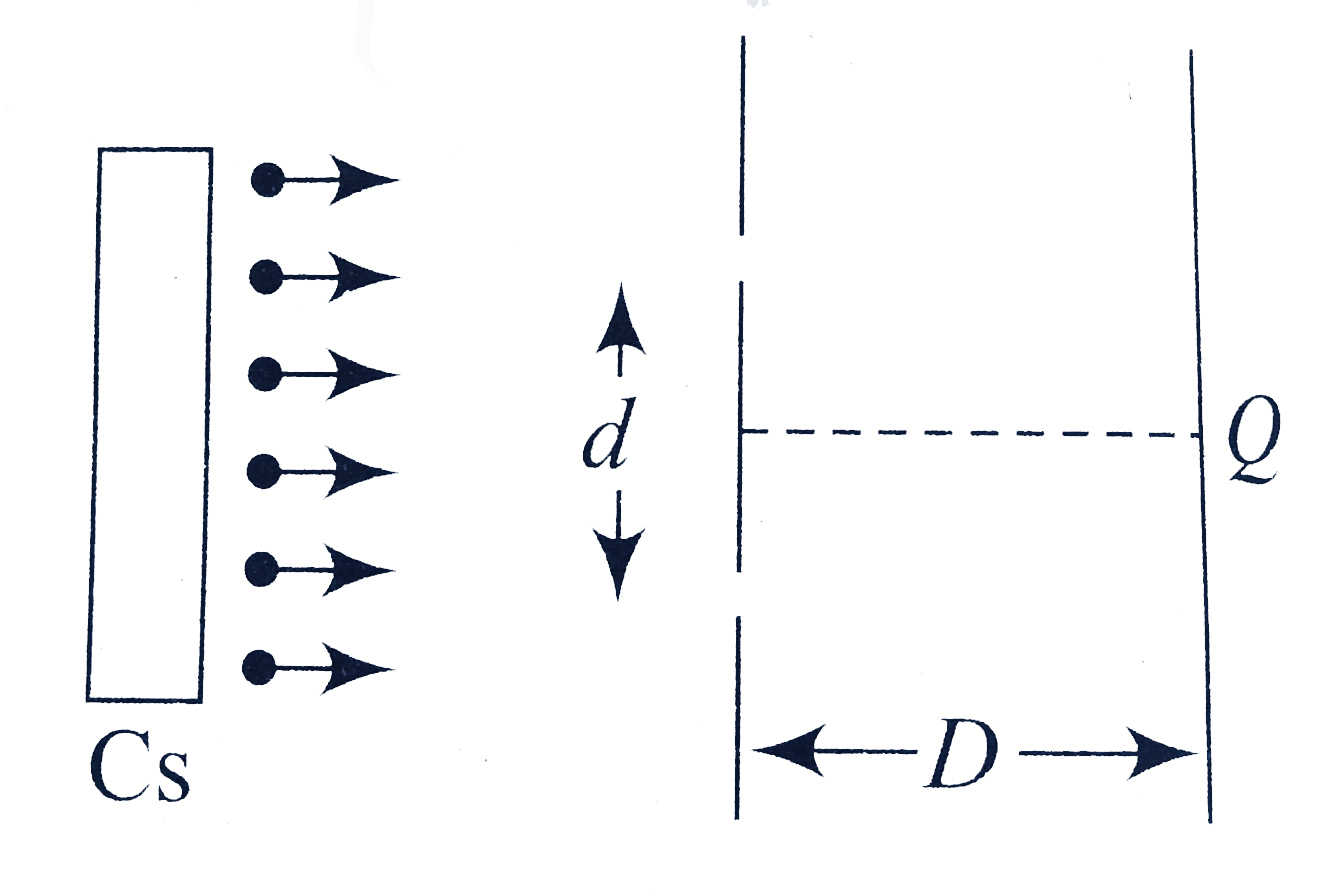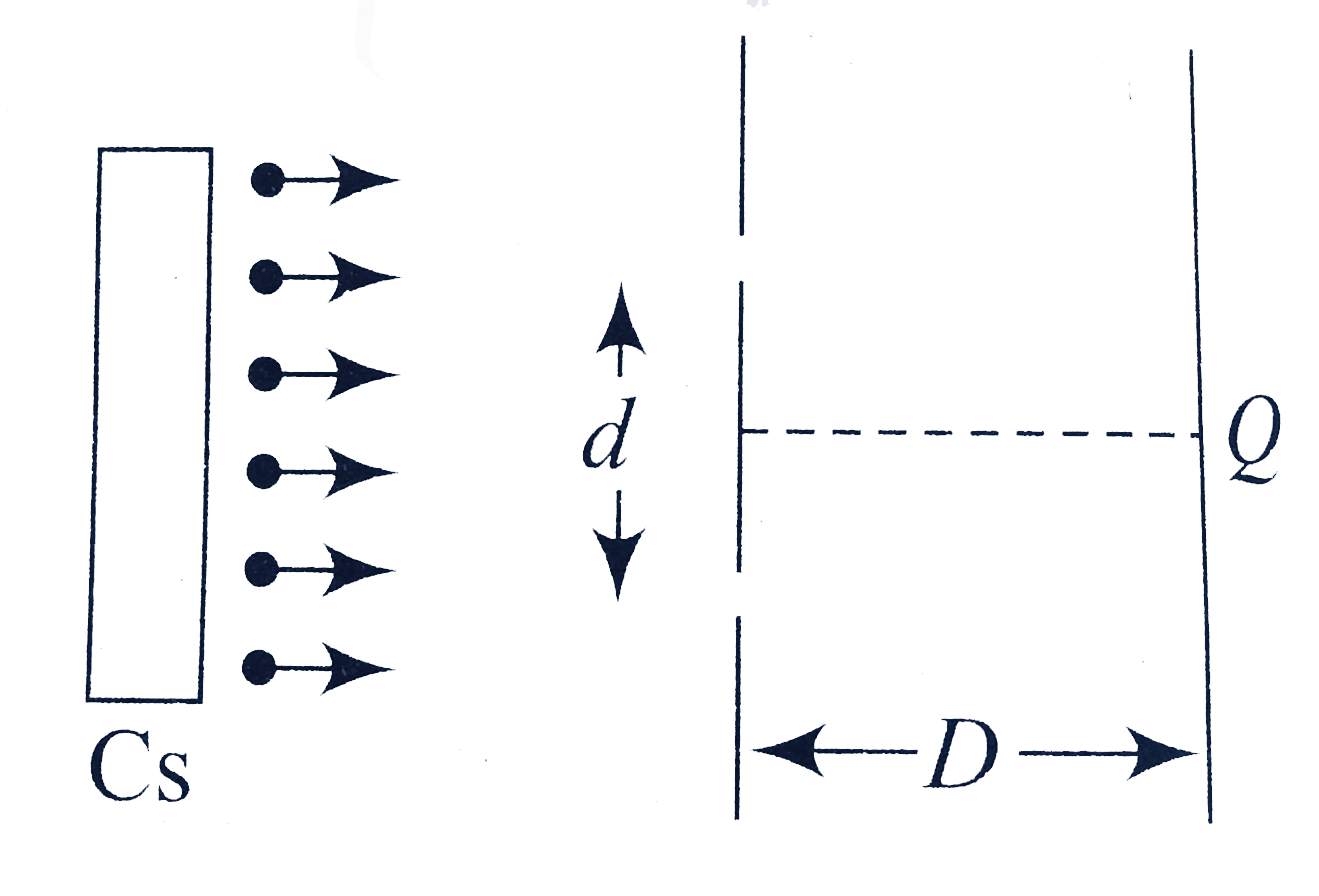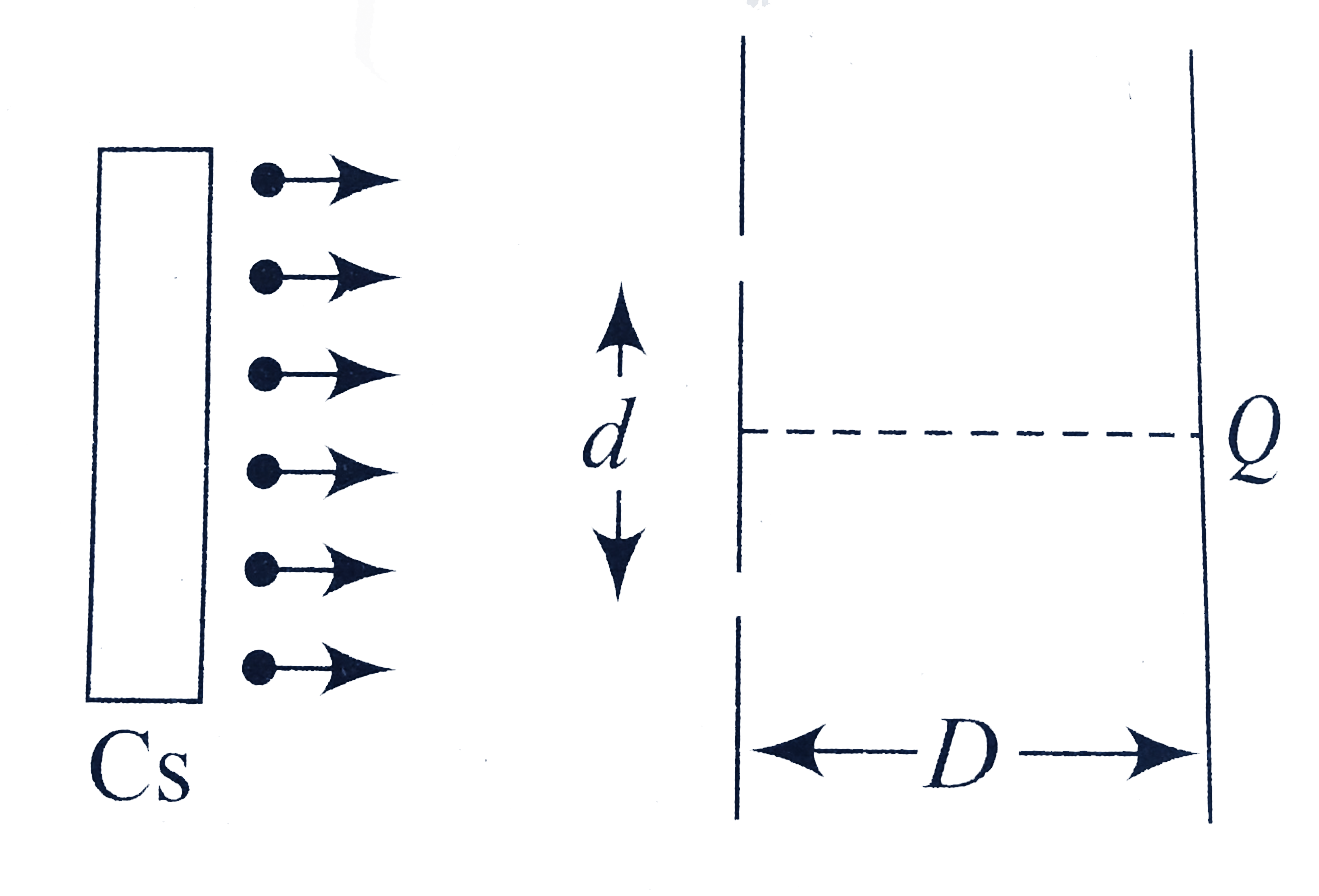
A Cs plate is irradiated with a light of wavelength , being the work function of the plate, h Plank's constant, and c the velocity of light in vacuum. Assume all the photoelectron are moving perpendicular to the plate toward a YDSE setup when accelerated through a potential difference V. Take charge on a proton and moss of an electron . Read the paragraph carefully and answer the following question:
Q. If the wavelength of light used in photoemission is less that , then the fringe width will
increase
decrease
remain same
cannot be dicided
The correct Answer is:B
As v increases, decreases.
Topper's Solved these Questions
- BOOK - CENGAGE PHYSICSCHAPTER - PHOTOELECTRIC EFFECTEXERCISE - Integer9videos
PHOTOELECTRIC EFFECT
- BOOK - CENGAGE PHYSICSCHAPTER - PHOTOELECTRIC EFFECTEXERCISE - Single Correct Answer Type7videos
PHOTOELECTRIC EFFECT
- BOOK - CENGAGE PHYSICSCHAPTER - PHOTOELECTRIC EFFECTEXERCISE - Multiple Correct10videos
PHOTOELECTRIC EFFECT
- BOOK - CENGAGE PHYSICSCHAPTER - NUCLEIEXERCISE - QUESTION BANK59videos
NUCLEI
- BOOK - CENGAGE PHYSICSCHAPTER - RAY OPTICSEXERCISE - DPP 1.612videos
RAY OPTICS
Similar Questions
The mass of an electron is m, charge is e and it is accelerated form rest through a potential difference of V volts. The velocity acquired by electron will be :
View SolutionIn an electron gun, electron are accelerated through a potential difference of V volt. Taking electronic charge and mass to be respectively 'e' and 'm', the maximum velocity attained by them is
View Solution
Knowledge Check
- Question 1 - Select One

A Cs plate is irradiated with a light of wavelength λ=hcϕ,ϕ being the work function of the plate, h Plank's constant, and c the velocity of light in vacuum. Assume all the photoelectron are moving perpendicular to the plate toward a YDSE setup when accelerated through a potential difference V. Take charge on a proton =e and moss of an electron =m. Read the paragraph carefully and answer the following question:The fringe width due to the electron beam isAλDdBλD2dChD(d√2emV)Dnone of these - Question 2 - Select One

A Cs plate is irradiated with a light of wavelength λ=hcϕ,ϕ being the work function of the plate, h Plank's constant, and c the velocity of light in vacuum. Assume all the photoelectron are moving perpendicular to the plate toward a YDSE setup when accelerated through a potential difference V. Take charge on a proton =e and moss of an electron =m. Read the paragraph carefully and answer the following question:
Q. Instead of moving perpendicular to the plate, if the electrons were moving randomly, then the central maximum would shiftAupwardBdownwardCno shiftDno fringes will be formed - Question 3 - Select One
An electron of mass m and charge e is accelerated from rest through a potential difference V in vacuum. The final speed of the electron will be
AV√e/mB√eV/mC√2eV/mD2eV/m
The mass of an electron is m, charge is e and it is accelerated from rest through a potential difference of V volts. The velocity acquired by electron will be
View SolutionA proton when accelerated through a potential difference of V volt has a wavelength λ associated with it. An alpha-particle in order to have the same λ must be accelerated through a potential difference of
View SolutionIf the work function of a metal is 'ϕ' and the frequency of the incident light is 'v', there is no emission of photoelectron if
View SolutionAn electron of mass m has de broglie wavelength λ when accelerated through a potential difference V . When a proton of mass M is accelerated through a potential difference 9V, the de broglie wavelength associated with it will be (Assume that wavelength is determined at low voltage ) .
View SolutionAn electron and proton are accelerated through same potential, then λe/λp will be
View Solution

